KINTO Global Innovation Days (イベント企画・事前準備)
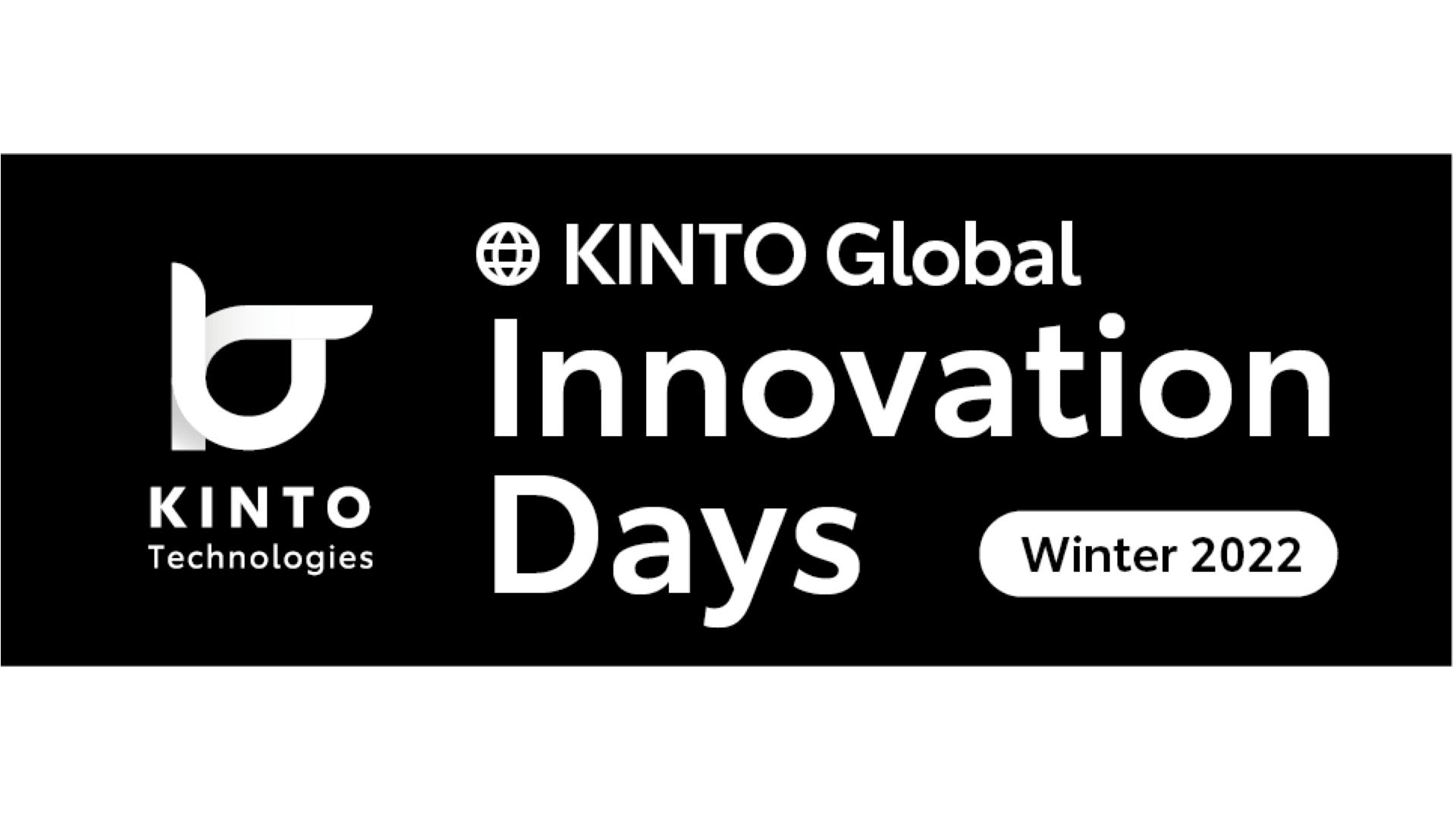
概要
グローバル開発G業務エンハンスチームの森、榊原、Floです。グローバル開発Gでは12/14~21の6日間にわたり、「KINTO Global Innovation Days」と称した社内Hackathonのようなイベントを開催しました。12/14~19までの4日間でセミナーを3本と、実際の開発は2日間の構成です。このようなイベントを開催するのはKINTOテクノロジーズ内でも初めてのことでした。本記事では本イベントに関する連載記事の1本目として開催に至るまでの様子をお伝えします。
きっかけ
KINTOテクノロジーズは現在約300名で構成され、2年ほどでおよそ倍の人数になりました。その中で、グローバル開発Gも現在60名の大所帯です。組織としては5~10名程度のチームに細分化され、それぞれタスクをこなしていますが、チームを横断したコミュニケーションは常に課題でした。同じグローバル開発G内でも顔と名前が一致しないこともしばしば…。また、コミュニケーションとスキル向上のために内部で勉強会を企画・運営していたものの、どうしても一方的な知識共有になってしまっていました。
エンジニア自身が手を動かして学べる機会を模索していましたが、7月にグループ内の数名がToyota Motor North America (TMNA) のHackathonに参加したこともあり、これを我々グループ内で開催することで、上記の課題解決に繋がるのでは?と考えて、8月末から計画をはじめ、提案に移すことにしました。
目的と開催時期
一般的にHackathonイベントから得られるベネフィットは様々ですが、今回我々は「コミュニケーション活性化」を第一目的としました。ビジネスに寄りすぎないことである程度自由な発想が得られたと思います。
また、開催時期については遅くとも2022年内開催を目標としました。グループ横断で携わっていた大きなプロジェクトが11月に目途が着きそうなこと、4Qまで差し掛かると先のタスクが読めないことが理由です。
調査とコンテンツ検討
初めてのイベント開催だったため、実際のイベントがどうあるべきか検討すべくまずは世界中のHackathon事例を調べました。調査担当は榊原です。
他社のテックブログやHackathonのイベントサイトを中心として様々なお手本を調べているうちに、パターンが見えてきました。そのパターンの要素をピックアップし、最も我々の組織や目的に則したポイントを組み合わせることによってInnovation Daysの内容を組み立てる事ができました。調査結果の例はたくさん取り上げることができるのですが、その中から3点解説します。
調査結果1:ベネフィット
イベントの準備を進めるにつれて、参加者や関係者、ステークホルダーに対して、参加することによってどういった効果が見られるかを伝える必要性を感じました。例えば、組織へのベネフィットは知的財産権になるアイデアを得る機会であることや、メンバーのエンゲージメントを高め、新たな強みの発掘ができる機会であることを挙げられます。また、個人へのベネフィットは、普段の業務では取り組めないアイデアを考えたり、あまり関わることのない業務工程やメンバーと接することによって、いろんな面での学びとなることを訴えかけました。
調査結果2:コンテンツのアイデア
上記のベネフィットを踏まえ、コンテンツとして取り入れたのがセミナーです。Hackathonのようなイベントが開催される際には、ゲストを招いてトークを行ったり、Hackathonのテーマや目的に沿った講義やワークショップが開催されることがあることを知り、今回Innovation Daysでは普段経験しない上流工程のworkshop、コミュニケーションworkshop、そして「KINTOテクノロジーズが開催するHackathon」なので、トヨタウェイのworkshopを準備しました。
IT企業が開催するイベントといえばノベルティー!という方も少くはないかと思います。今回我々はステッカー、パーカーとクリアファイルを参加者とサポートメンバーへお渡ししました。他にも、最終ピッチや成果物の判定基準やルールの設定、コードに付与する時間、アイスブレイクやプライズ等も様々なイベントからアイデアを拝借しました。
※イベントの名称が決まってからグローバルG内のUIUXチームにロゴも作成いただきました。おかげで素敵なノベルティーができました。Appreciate it a lot!!!!
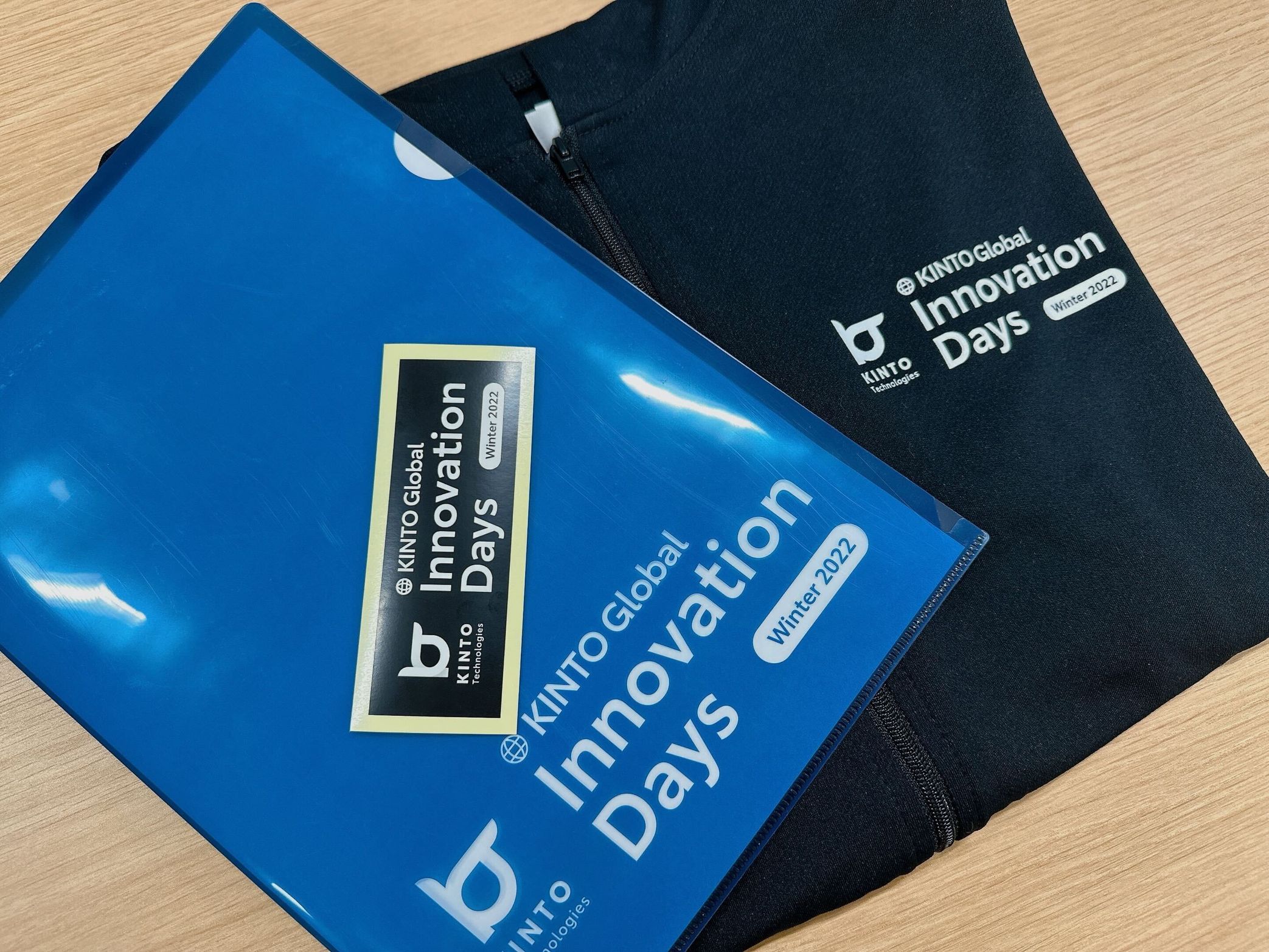
調査結果3:テーマ設定
最後に取り上げたいポイントが「テーマの設定」です。多くのHackathonでは開催側からテーマや目的が絞って掲げてあり、各種テーマをスポンサーする存在もいる場合もあることからヒントをもらい、我々のイベントではマネージャーが「チャレンジテーマ」を1つ決め、各テーマのスポンサーとして「チャレンジオーナー」となって参加者にテーマの説明を実施しました。こういったテーマの設定によってマネージャーから参加者へのサポートも示すことができ、エールも送ることができました。
参考:
- Council Post: Four Tips For Running A Successful Hackathon
- Urban Mobility Hackathon
- Find & Organize Hackathons Worldwide - Mobile, Web & IoT
- Hackathon Guide
テーマの検討
テーマの内容については、実際に当日評価をするマネージャー4名(グループマネージャー+アシスタントマネージャー3名)に4テーマを選定いただきました。
| テーマ 1-2 | テーマ 3-4 |
|---|---|
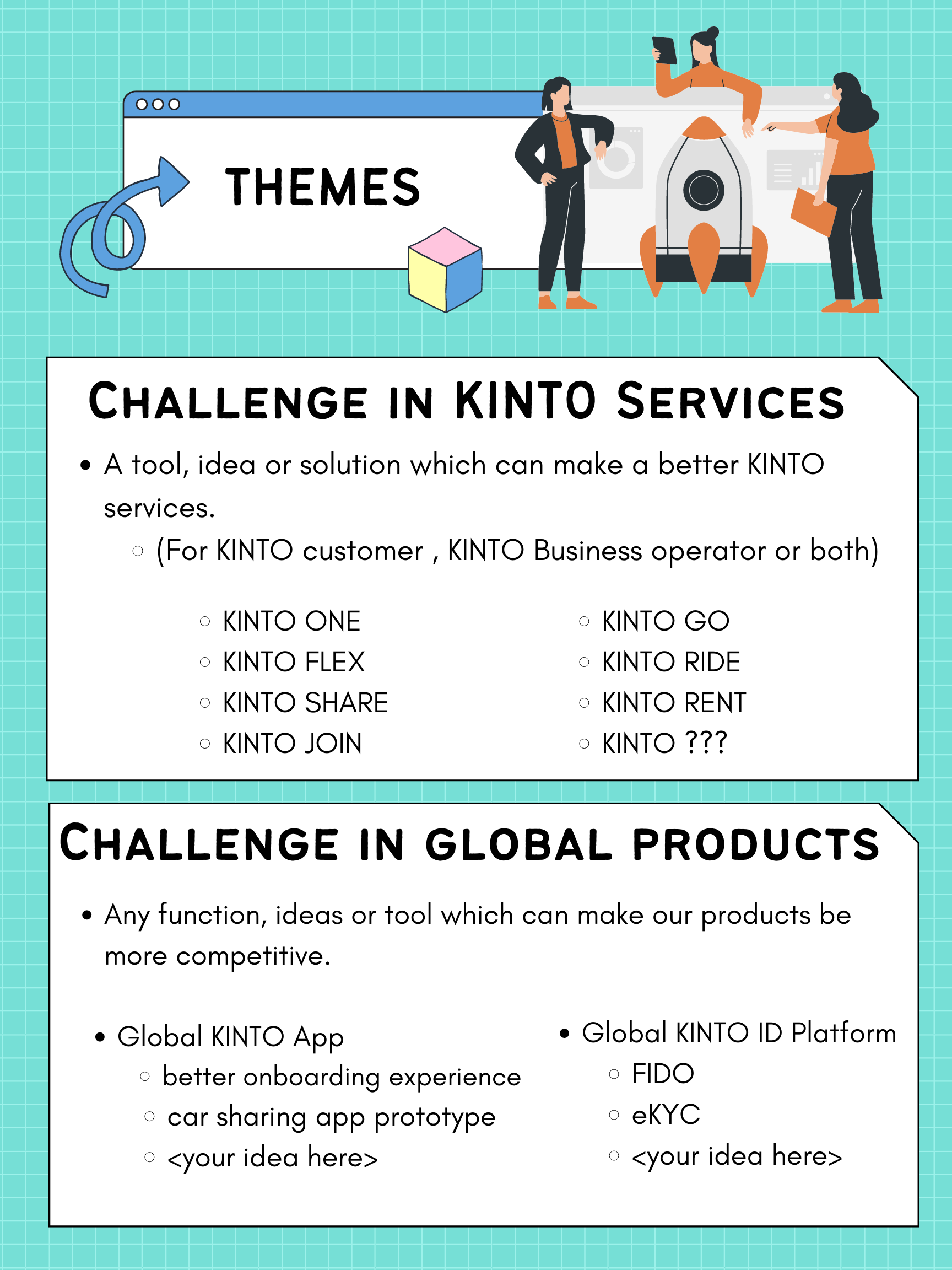 |
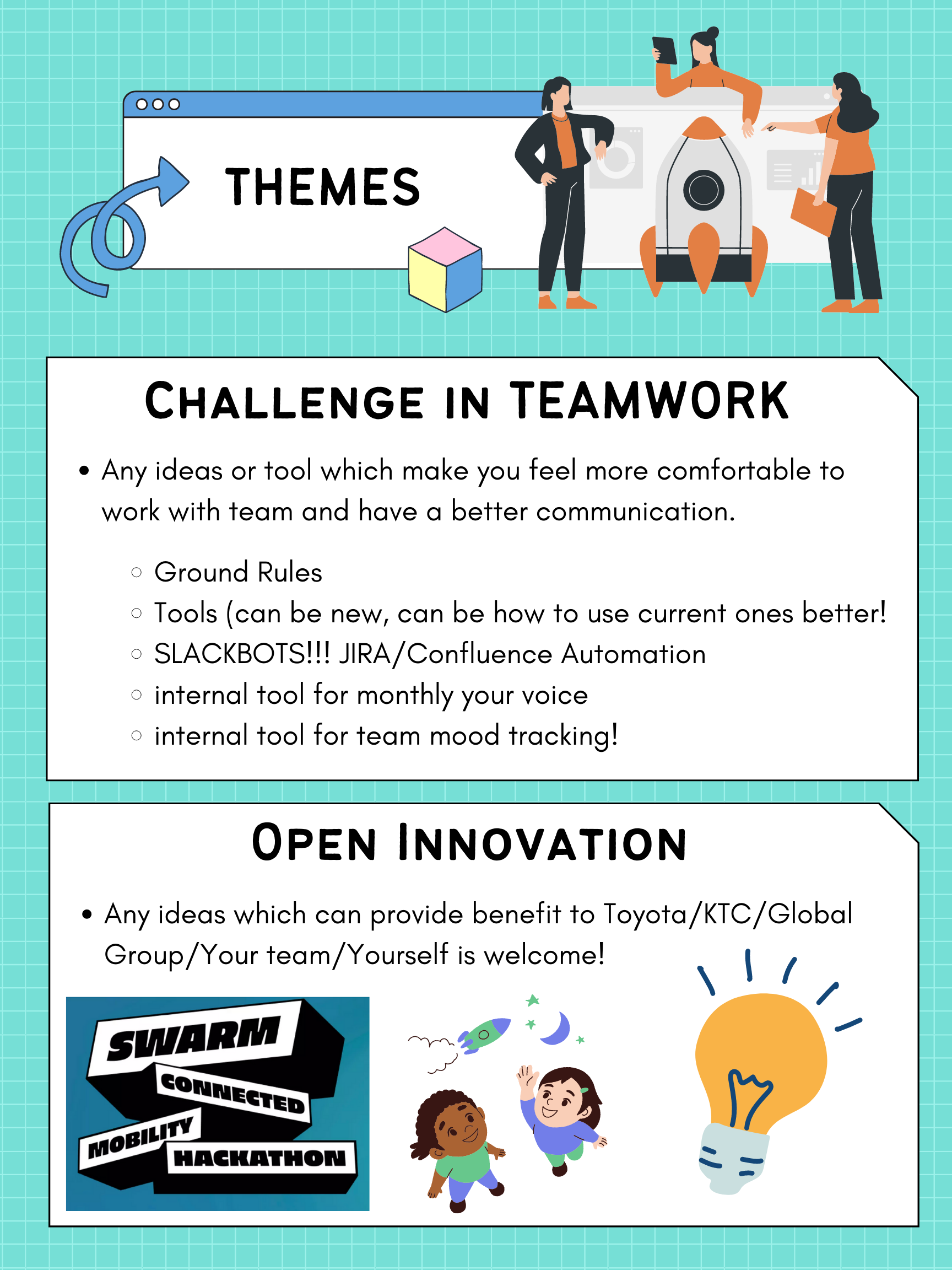 |
Encouraging members
社内で初めての試みということもあり、企画を始めてから調査、コンテンツ検討、テーマの選定を経てメンバー募集するまでに3ヶ月ほどかかりました。最終的にテーマが決定した11月頭にグローバル開発G全員を集めた企画説明を行い、11月8日にメンバー募集を実施しました。この際、公式イベント名を「KINTO Global Innovation Days」と題しました。
尚、参加者については全員強制で参加させる案もありましたが、自主性を尊重するために参加したい人に挙手する形式としました。実際に募集したSlack 🔻🔻
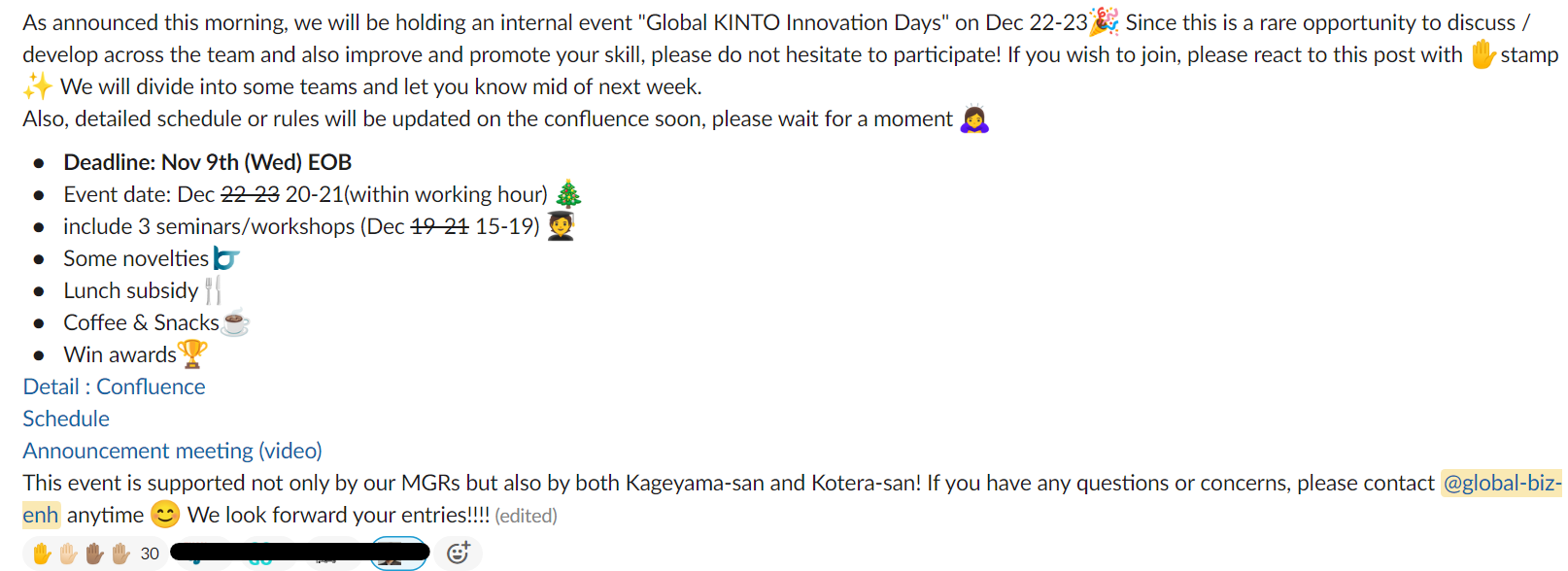
説明会でマネージャーからもエールの言葉をいただいたり、CEOやCIOのサポートもいただいている旨を伝えたりしましたが、当初はなかなか参加者が集まりませんでした。
そこで、ベネフィットなどをメンバーに直接訴えかけるようにしました。担当はFloです。オフィスで直接会話する際やDMなどでベネフィットを伝えることにしました。それによって、参加できないメンバーにその理由を聞いて改善できるからです。
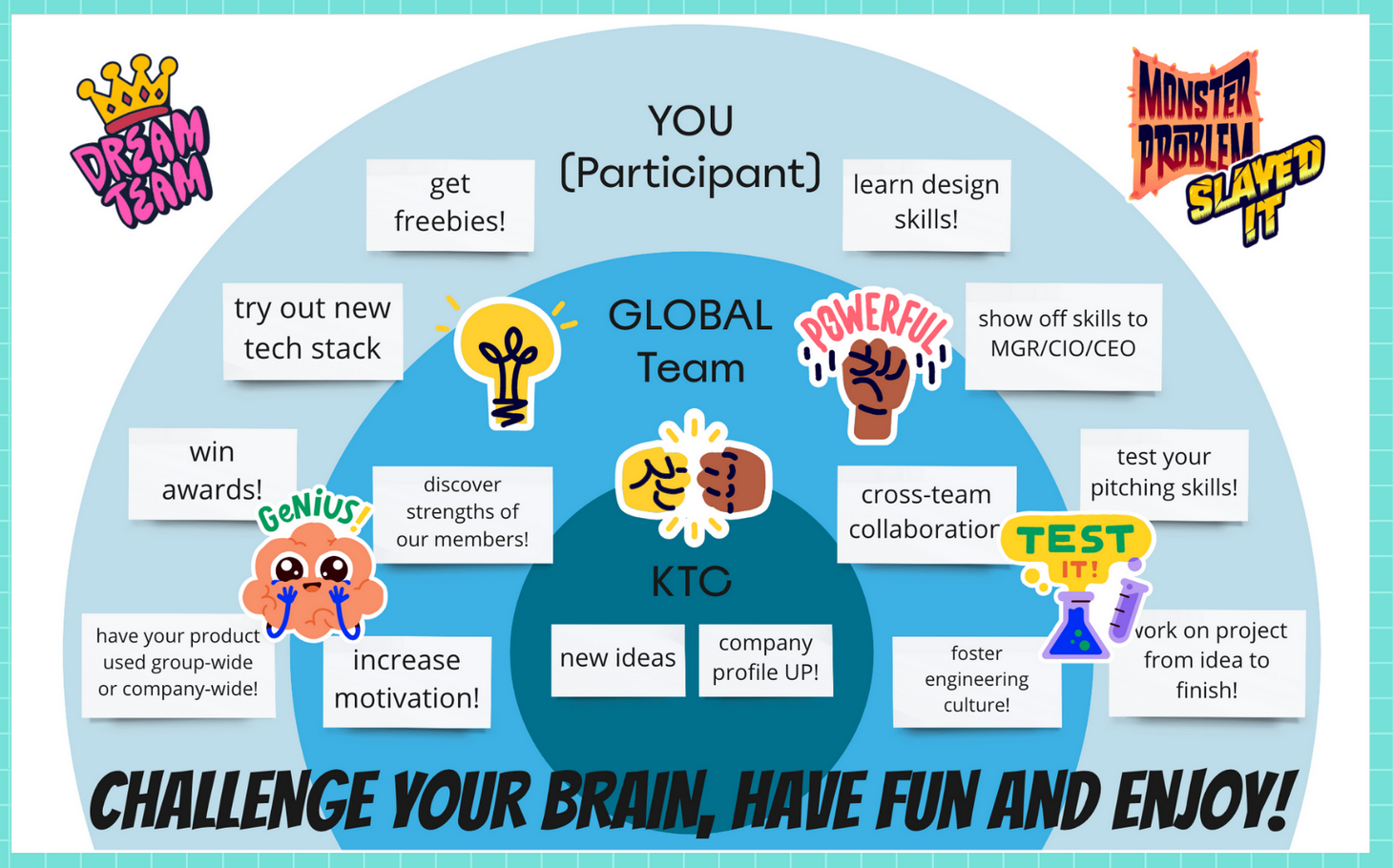
まず、本イベントに参加することで、どのような体験ができてどのようなスキルが得られるか伝えました。普段使えないプログラミング言語を試せる、新しいツールを提案できる、優先度が低かった改善案を提案できる、など様々な体験が得られると訴えました。
また、イベント内での提案はグローバルGでのプロセス改善に活用されたり(テーマ 3)、新サービスとして製品化されたり(テーマ 1, 2)、もしくは他のHackathonイベントへの参加も検討され得るなど、当事者意識と投資意識にも訴えかけました。
中でも、我々が一番に心がけたのはサポート環境です。アイデアは評価されて表彰されますが、あくまで切磋琢磨するイベントなので、こういったイベントに参加したことがない、技術者ではないから貢献できない、自分は役に立たない、と思っている方にも、「普段体験しないことを経験できるイベントだからこそ参加してほしい」と説明しました。
会話の中で気づいたこともあります。開催日程がクリスマス前だったため、連休を予定したり母国へ帰省したりする方が複数名いました。そのため、イベントを数日前倒しすることにしました。各workshopの講師とスケジュールを調整し、最終的に12/14-19をプレイベント、12/20-21をInnovation Daysとしました。これによって参加できるメンバーが少なくとも2-3名増えました。
余談ですが、運営メンバーはたったの3名+サポート1名だったため、土日を挟んだのは我々にとっては好都合でした。1週間ぶっ通しでのイベント開催だったら体力的に厳しかったと思います。
グルーピングと事前ワーク
リクルートの甲斐もあって、実際の参加者は30名となりました。グループマネージャーやアシスタントマネージャー、我々運営メンバーは参加対象外なのでグローバル開発グループの半数以上が参加してくれました。
Business development, PdM, UIUX, Frontend, Backend, Testing, DevOpsなど様々なチームから参加者が集まったので、それぞれを①できるだけ普段業務上関わらない人②パワーバランスを取るためにチームリーダーは分けることを条件として配分しました。5名×6チームです。(30名というキリの良い人数だったのでちょうどいい感じのメンバー数に分けられました 😊 )
チームメンバーは11/18に発表、その後2週間で以下を検討・提出してもらいました。
- Team name
- Theme of choice
- Team leader
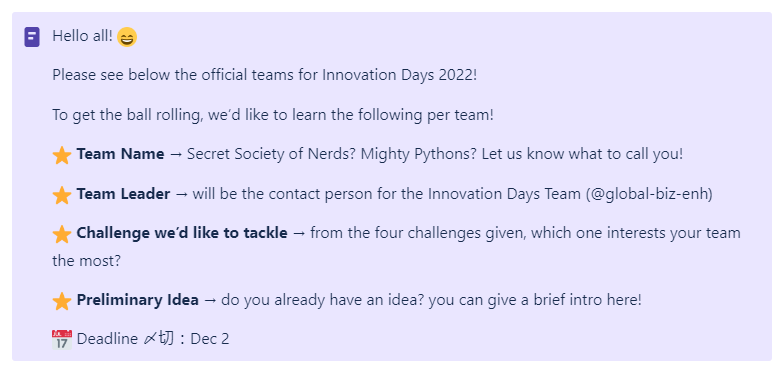
普段、グループ内で最もいろんな人と関わる我々チームとしては、参加メンバーがうまくコミュニケーションを取れるか?積極的にイベントに参画してくれるか?など親心的に心配しておりましたが、その心配は無用でした。参加者は自主的に参加してくれていることもあり、それぞれのチームがSlackの独自チャネルを作ったり、ミーティングを開催したり、思った以上に積極的に動いてくれたので、今後のイベントにも期待が持てました! 🎉
事前準備の振り返り
社内はもちろん、前職での経験も完全に何もないところからスタートした企画だったので、いろいろな調査や様々な方からのアドバイスを受けながら準備を進めてきました。特に承認プロセスは時間がかかりましたが、CIOや社長まで巻き込めたことは成果の一つであり、今後のイベントにも繋がる大きな要素だったかと思います。
また、アイデア出し(調査含む)、企画+上位層への報告、状況把握とメンバーの鼓舞、と業務エンハンスチームメンバーそれぞれが得意なことを組み合わせてうまくタスクを分散できたことで、構想から約4ヵ月の短期間で実行に移せた要因です。
プレイベント期間や当日も様々な課題がありましたが、その様子は次回の記事に記載いたします。
最後に
余談ですが、KUDOSや本イベントなどの企画は業務エンハンスチーム内の日常会話から生まれています。我々チームは会話をとても大事にしていますが、「この課題を解決するにはこういう手があるかも」「こういうのあったらいいよね」「前職ではこういうことしていた」などのカジュアルな会話から企画・実行・結果に残すことまでできる力を持った業務エンハンスチームを誇りに思います。
関連記事 | Related Posts
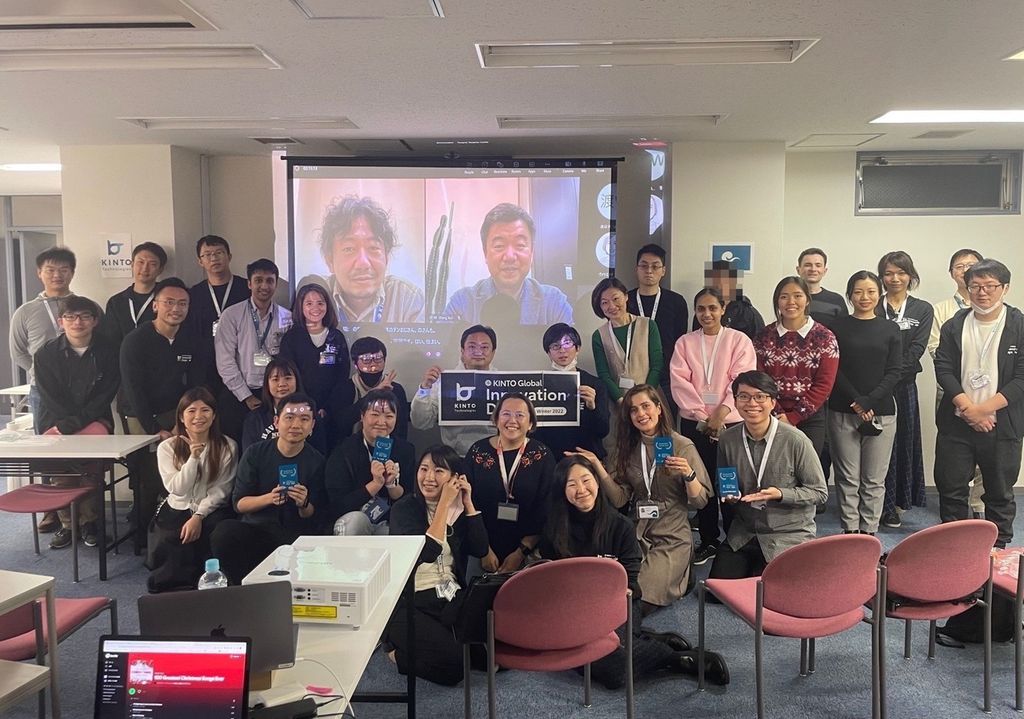
KINTO Global Innovation Days (Event Report)

KINTO Global Innovation Days (イベント企画・事前準備)
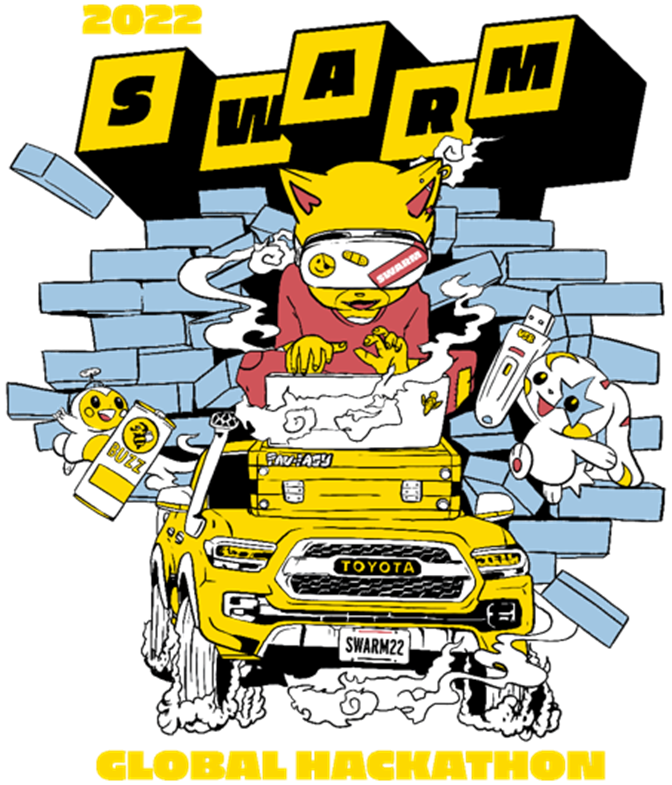
TMNA Swarm Hackathon Participation Report

KINTO Global Innovation Days (Winning Team Interview)

KINTO Global Innovation Days (イベントレポート)

Hosting a Hybrid IT Event: Connecting External Attendees and In-House Teams On-Site and Online
We are hiring!
【UI/UXデザイナー】クリエイティブ室/東京・大阪・福岡
クリエイティブGについてKINTOやトヨタが抱えている課題やサービスの状況に応じて、色々なプロジェクトが発生しそれにクリエイティブ力で応えるグループです。所属しているメンバーはそれぞれ異なる技術や経験を持っているので、クリエイティブの側面からサービスの改善案を出し、周りを巻き込みながらプロジェクトを進めています。
【PjM】KINTO開発推進G/東京
KINTO開発部 KINTO開発推進グループについて◉KINTO開発部 :58名 - KINTOバックエンドG:17名 - KINTO開発推進G:8名★ ←こちらの配属になります - KINTOフロントエンドG:19名 - KINTOプロダクトマネジメントG:5名 - KI...
